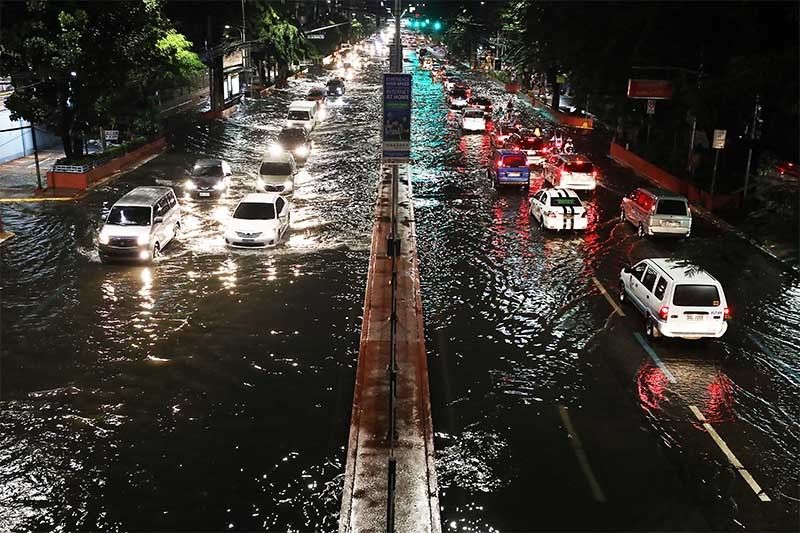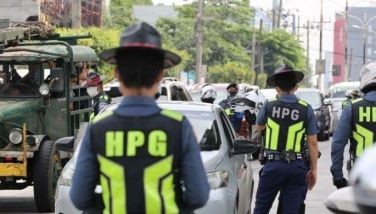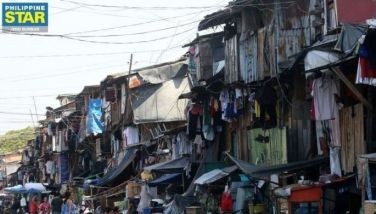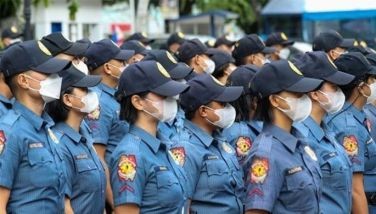La Niña amid pandemic: What local governments, communities can do to prepare

MANILA, Philippines — The onset of La Niña, the weather pattern characterized by above normal rainfall conditions, is seen to present challenges to the efforts of the government to fight the coronavirus outbreak.
State weather bureau PAGASA announced Friday the onset of La Niña, which would dump more rain than usual. It is expected to persist until the first quarter of 2021.
PAGASA warned that La Niña could trigger floods and landslides. The impacts will be experienced mostly in Mimaropa, eastern section of Luzon, Visayas and Mindanao.
It added that five to eight tropical cyclones, most of which are forecast to make a landfall, are also expected to enter or develop in the Philippine Area of Responsibility.
Advocacy group Agap Banta, composed of disaster risk reduction and management practitioners, said that the country has invested significantly in strengthening the preparedness and response capabilities in national, local and community levels after typhoons Ondoy (Ketsana) and Yolanda (Haiyan) struck vast swathes of Metro Manila and Visayas.
But it stressed that an occurrence of another disaster at a time when government efforts are directed to pandemic response and recovery will be “overwhelming.”
“Disaster preparedness amid COVID-19 pandemic is a work in progress being the first time that the Philippines has experienced a global pandemic this long,” Agap Banta told Philstar.com in an email exchange.
“While health impacts of disasters have been well-recognized, anticipated and responded to during typhoons, preparedness and health emergency response plans have not been simulated and tested nationwide. Dealing with a combined emergency remains a big challenge,” it added.
In the middle of a pandemic
“Prior to the start of the rainy season, the NDRRMC had already made the necessary preparations in view of the La Niña happening during the COVID-19 pandemic,” NDRRMC spokesperson Mark Timbal said.
He was referring to the NDRRMC Memorandum 54, series of 2020, which details disaster preparedness measures that incorporate health protocols.
The memorandum states that physical distancing must be observed in evacuation centers, responders and evacuees must wear protective gear such as face masks and face shields and the distribution of relief goods must follow COVID-19 mitigation measures.
“The funding for response and the stocks for relief are still enough and readily available for use in case government agencies need to augment the efforts of the LGUs on the ground,” Timbal said.
Agap Banta also said there is a need to strengthen coordination between and among government and non-government agencies to avoid “siloed and fragmented” response. It added there are areas of improvement particularly for highly-vulnerable, low-income localities that have limited funds and facilities such as evacuation centers and isolation facilities for coronavirus patients.
Challenges in evacuation
During floods and landslides, people flee to cramped evacuation centers, which can be designated temporary shelters, schools or covered courts.
Evacuation centers are feared to become hotbeds of coronavirus infections as there might be difficulty in maintaining physical distancing in temporary shelters.
“All LGUs have already prepared their facilities that would be used as evacuation sites in case of emergencies. These evacuation sites are distinct and separate from those facilities being used for COVID-19 quarantine,” Timbal said, adding that evacuation must be done earlier to ensure the observation of physical distancing during the process.
He also said that evacuation centers have a specific number of people that will be housed to ensure that the physical distancing will be enforced. The health conditions of those who will be evacuated will also be monitored regularly.
PAGASA administrator Vicente Malano, for his part, suggested the use of hotels and closed private schools as temporary shelters.
But for Agap Banta, there is a need to re-layout existing evacuation centers to a camp management set-up to prevent transmission of the virus.
This set-up can be achieved by aiming for one family per tent, setting up a triage area in the entrance of evacuation centers to assess health conditions of evacuees, increase access to water, sanitation and hygiene facilities, providing clear markings for physical distancing at the assigned food and non-food items distribution area and arranging contactless distribution of family food packs and hygiene kit, if possible.
“Ultimately, the objective is to achieve zero casualty and zero COVID-19 community transmission,” Agap Banta said.
What localities can do
Agap Banta said the level of disaster preparedness varies from one local government to another. Here are some of the ways to help LGUs prepare for disasters during the ongoing health crisis:
- Assess sufficiency of local funds to ensure adequate financing of relief, rehabilitation and recovery operations
- Gear up roles of Barangay Health Emergency Response Teams, barangay health workers, trained swabbers, rescue and retrieval teams, mental health experts, nutritionists and protection experts for disasters and health emergencies
- Prepare and orient members of incident management teams to handle both disasters and public health safety protocols
- Consolidate data and update maps on its vulnerable population such as women and girls, elderly, persons with disability and internally displaced persons to direct aid to those most in need
- Update inventory and functionality of early warning equipment and improve outreach from hazard and alert signals to evacuation to response and post-disaster activities
- Establish remote coordination and participatory mechanisms to train and disseminate guidelines
- Conduct inventory of facilities being used as quarantine centers, isolation areas, evacuation center. Check, map and assess whether facilities are within hazard prone areas
- Review and update inventory of relief goods and other resources. Coordinate with groups from private sector for standby agreements on prepositioned emergency supplies
The advocacy group also emphasized the importance of families making evacuation plans, updating emergency bags, getting involved and informed and being mentally prepared.
“When Typhoon Ambo happened in mid-May, much improved systems were put in place like policies on early warning and preemptive evacuation failed to keep the population out of harm’s way in some areas in Eastern Visayas. But then it also showed that well-tested preparedness and response programs coupled with COVID-19 health protocols at the local level will lead to zero casualty and zero transmission as we saw in Albay province,” Agap Banta said.
- Latest
- Trending




























